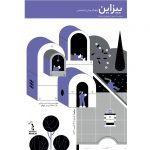

A sustainable relationship between people and products
Our first perception of design is the form or functionality that the audience sees or becomes aware of when using the product. The form and appearance of design are our initial interpretation of a product. The design focuses on the form and appearance of a service or product that at first attracts the audience and ultimately leads to its purchase and use. The importance of proportions, colors, textures, and patterns in a product is not ignored when it comes to attracting the audience and creating visual pleasure. However, regardless of creating a unique form, every product should also consider the user’s needs during its usage. In fact, the function of a product over time is very important and leads to the user’s internal and genuine satisfaction.
Inner beauty
In human relationships, when individuals interact and communicate with each other, regardless of how this relationship begins, they strive to enjoy it. Intellectual, cultural, and ideological similarities among people help sustain this relationship. The positive energy and vitality that originates from the first encounter based on the behavior and external appearance of people attracts them to each other. Gradually, over time, beyond the external beauty of people, it is the inner beauty that shows itself. This is something not immediately visible from the outside. The level of interaction and socializing among people allows the discovery and expression of the inner beauty or ugliness of each person.
So what is inner beauty, and how can it be seen? What is clear is that culture, knowledge, consciousness, and the routines of each individual’s life are elements that can be used to see or examine the inner beauty of people. Let me give you an example; you may establish a connection with someone and be attracted to them based on their appearance, how they speak, or how they communicate. In the early days, what is still evident in this interaction is external beauty. However, over time and deepening the relationship, the way they express themselves becomes factors other than inner beauty. When you don’t recognize the depth in people and don’t find what takes you deeper and brings more inner joy, it leads to a change in your views and opinions about that relationship. In fact, inner beauty shows itself when we go from the surface to the depths, where the root is found in the nature of each individual.
Exactly the same conditions apply to the relationship between humans and products.

Inner design
If we view the relationship between humans and products in the context of the relationship between humans, we will notice many similarities between these two types of relationships. A product, like a human, has a personality and a spirit that the designer has created when designing it. As a user, you may choose a product based on its appearance and the attractiveness of its form. For the first few days, the excitement and enthusiasm for its form, color, or even the product’s branding dominate you. But over time, what still makes the product functional and beautiful for you is the design inside. This means that the designer of the product has given importance to the details that the user encounters over time while using the product. Usually, the user experience that the designer creates and the attention that is given to the small needs of the user are in line with the inner design of the product.
When using a physical product, the beauty and proportions of the internal parts and the quality of their Production become important, and this creates the beauty of the interior. What the user discovers inside the product over time, during their interaction, is the inner design.
In fact, the designer has thought about these moments during the creation of the product, and as much time has been spent on designing the form and appearance of the product, the same amount of time has been devoted to designing its internal components. The integration of the exterior and interior of a product in terms of form, function, and most importantly, concept, is crucial. It means that the entirety of the product, from the whole to the parts, from the outside to the inside, is created based on a concept. The user, while using the product, touches the deep thought that underlies the product’s design. When they realize that the designer has devoted time to even the smallest details inside the product, they will feel respected. In digital products, regardless of the appearance and form that has been designed, the pleasant experience that the user accumulates over time in different emotional conditions originates from the inner design. In fact, the designer’s emphasis on the user’s inner needs, which can be both functional and emotional, is the key to creating inner design. Furthermore, the user and customer’s attachment and loyalty to the product depend on the inner design.

Conclusion
Adhering to inner design, in both digital and physical products, has a direct connection to the longevity and sustainability of the product in the market. Let’s acknowledge that the external form and beauty of a product play a role in initially attracting the audience, but to establish a lasting connection, the inner design must create the right and unique user experience. Inner design in modern products, including crafting the right user experience, shaping the form and design of details, and creating a distinctive concept and branding, all contribute to enhancing user enjoyment during product use. Both the external design and the inner design of a product should hold equal importance and innovation in the product creation process.

By: Majid Ahmadi Khoshbakht
CEO of MAKH




